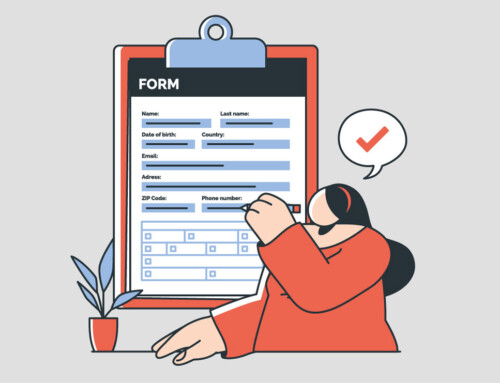Contents
Legal work has always revolved around documents, but the scale and speed required today have outgrown traditional systems.
According to the 2024 ABA Legal Technology Survey, over 75 % of U.S. law firms now rely on cloud-based document management platforms to manage client information — a sharp rise from just 52 % five years ago. Yet many still struggle with fragmented storage, slow retrieval, and inconsistent security controls that cost firms an estimated $9,000 per lawyer per year in lost productivity.
Forward-looking firms are therefore turning to integrated, cloud-native document management platforms that combine accessibility, automation, and governance within a single environment.
Legal software solutions for document management embody this shift: secure cloud infrastructure, unified matter organization, and a full-text search repository explicitly designed for legal workflows and framework. Firms adopting similar systems have documented up to 74 % reductions in time spent handling case files, translating directly into more billable capacity and lower operational risk.
The sections follow how solutions modeled around effective legal document management and software solutions—like RunSensible’s— are helping firms utilize technological tools to improve their business value.
Why Legal Document Management Defines Law Firm Performance in 2025
Legal Document Management now sits at the center of law firm performance. Documents drive every transaction, filing, and client interaction, and the systems that manage them shape how efficiently a firm can work as more practices move to cloud-based operations. Managing documents securely and consistently has become a strategic requirement, not an administrative task.
The modern legal environment demands quick access to information, reliable version control, and demonstrable compliance with data-handling obligations. Firms using structured document management report faster retrieval times, fewer administrative errors, and more substantial client confidence. These gains also support new pricing models—like fixed or blended fees—where predictability and process control determine profitability.
In 2025, three priorities define an effective document management strategy:
- Governance and Compliance: enforce clear access rights, retention schedules, and audit capability.
- Automation and Integration: reduce manual filing, improve consistency, and connect documents to related matters and communications.
- Performance Measurement: track retrieval times, accuracy, and system use to link improvements directly to lawyer productivity.
For law firm leaders, strong document management is an essential factor in delivering timely, accurate, and compliant legal work.
Legal Operations and the Business Framework of Document Management
Efficient legal service delivery depends as much on operational design as on legal skill. Firms are expected to manage data, costs, and communication with the same precision that governs their legal reasoning. Within this framework, legal operations and document management form the structural base of a firm’s business model. Legal skill and operational capability, together, determine how matters are handled, billed, and archived, and how information remains compliant with regulations and easily retrievable throughout the process.
How Legal Operations Support Better Document Management
Legal operations convert the business of law into measurable systems and standards. Their purpose is to align technology, process, and governance so that every engagement proceeds efficiently and defensibly.
Within that structure, legal document management serves as the mechanism that organizes information flow and preserves professional accountability. It ensures that documents are created, reviewed, and stored under uniform policies while maintaining a verifiable record of activity.
Modern clients expect transparency and cost predictability. Meeting those expectations requires an integrated platform where document workflows, timekeeping, and financial tracking operate together. Fragmented tools increase administrative effort and expose firms to compliance and reputational risk.
Key objectives of a modern document management strategy:
- Consistency: every document follows the same naming, filing, and review process across the firm.
- Accountability: Each action on a file is logged, creating an auditable record of compliance.
- Efficiency: reduced duplication and automation of routine tasks, freeing up time for billable work.
A coherent document management strategy, therefore, supports two measurable outcomes: operational discipline—through standardized procedures across matters—and business insight—through reliable data on work volume, responsiveness, and resource use.
Matter-Centric Management and Collaboration
Matter-centric organization remains the foundation of professional file management. Every item of work—contracts, pleadings, correspondence, and exhibits—must relate to a specific client and engagement. This structure safeguards confidentiality, enables complete audit trails, and supports discovery or regulatory review without delay.
The widespread adoption of collaborative cloud platforms has improved accessibility but introduced new governance challenges. Manual creation of shared folders or workspaces often leads to inconsistent naming, duplicate records, and uneven permission controls. These weaknesses can compromise confidentiality and delay document retrieval.
Firms that automate workspace provisioning at matter-opening cut setup time by more than half and reduce data-exposure incidents by over 30 percent.
Automated provisioning now defines best practice. Standardized matter folders, permissions, and retention settings are created automatically when a new file is opened. This approach eliminates manual setup, secures data from inception, and ensures uniformity across practice areas. The result is faster collaboration within clearly defined compliance boundaries—a practical balance between accessibility and control.
Building Institutional Knowledge as a Competitive Edge
Effective knowledge management converts prior work into institutional capital. Each completed matter contains language, analysis, and precedent that can guide future engagements. Integrating knowledge capture into document management ensures that these materials are indexed, searchable, and available for reuse.
Advances in contextual and semantic search now allow lawyers to locate relevant clauses or arguments without exhaustive review. This capability accelerates drafting, promotes consistent advice, and reduces repetitive research. By linking document management with knowledge reuse, firms strengthen their collective expertise and deliver predictable, high-quality service to clients.
Technology Trends Shaping Legal Document Management in 2025
Technology has become the primary driver of how law firms create, manage, and protect their documents. The rapid growth of artificial intelligence, automation, and intelligent search tools is redefining what an efficient document system looks like. These tools analyze, categorize, and connect on an unimaginable scale. For firms, staying competitive in 2025 means understanding how these technologies streamline routine tasks, enhance productivity, and open up the operation to upscaling.
Artificial Intelligence in Legal Document Workflows
Artificial Intelligence is now a core feature of legal work. Tasks that once took hours—like reviewing contracts, comparing clauses, or checking compliance—can be completed in minutes with the help of AI tools trained on legal language.
Law firms using AI-assisted review report over 60% reductions in administrative drafting and research time, while accuracy in contract analysis has improved by nearly 30% across many early adopters.
AI systems assist with:
- Document review and analysis – identifying key clauses and inconsistencies.
- Drafting support – summarizing or generating base versions of contracts and pleadings.
- Compliance checks – flagging missing terms or risk triggers.
However, reliable AI use requires proper controls. Each system must operate within the firm’s policy on data handling and quality assurance. Lawyers and paralegals are increasingly being trained in prompt design—the skill of asking specific, contextual questions to produce accurate outputs. Knowing how to use legal prompting ensures that automation supports professional judgment rather than replacing it. Firms that integrate AI drafting tools within structured governance policies report measurable improvements in turnaround time.
Smarter Search and Automated Data Structuring
Finding the correct document quickly remains one of the biggest challenges for law firms. Semantic search technology is addressing this by understanding meaning, not just keywords. A lawyer searching for “contract termination” can also find files mentioning “agreement cancellation” or “end of contract.” This shift from literal search to conceptual search saves hours of manual review and improves matter preparation.
Supporting this are two essential technologies:
- Optical Character Recognition (OCR): converts scanned or legacy paper files into searchable text.
- Automated metadata tagging: labels documents by matter, client, or issue type, ensuring every file is indexed and retrievable.
Together, these tools improve filing accuracy, strengthen audit trails, and cut retrieval times dramatically. Firms that maintain high filing accuracy rates reduce discovery costs and administrative overhead, while building stronger compliance records. Intelligent search turns document management into knowledge management—helping lawyers reuse past work efficiently and consistently.
The Next Phase: Autonomous and Connected Systems
The next phase of legal technology will feature autonomous systems capable of managing linked tasks across platforms. These AI-driven tools will coordinate document management, matter tracking, and compliance in real time.
To support this shift, document systems must prioritize secure integration, certified data protection (such as ISO 42001), and detailed audit controls. Open connectivity between practice-management, billing, and research tools will create a single, reliable digital ecosystem.
Firms that invest in connected, secure platforms are already reporting faster collaboration, improved compliance reporting, and measurable gains in client responsiveness. The direction of travel is unmistakable: the future of legal document management is intelligent, integrated, and governed.
Market Consolidation and the Evolving Competitive Landscape
The legal-technology market is entering a period of rapid consolidation and structural change. Firms are moving away from on-premises systems toward cloud-based platforms that offer stronger security, automation, and integration with other legal tools. As client expectations grow and vendors merge, technology decisions are now strategic choices that affect competitiveness and profitability.
This section outlines the key trends shaping that landscape: the shift to cloud infrastructure, major consolidation events, leading-vendor dynamics, and the priorities firms must address to remain agile and future-ready.
The Shift to Cloud Infrastructure
Law firms are accelerating their move from legacy, on-premises systems to secure, cloud-native platforms. The shift is driven by three business realities: hybrid work, the need for advanced data protection, and the growing use of AI in daily workflows.
The 2024 ABA Legal Technology Survey found that three-quarters of U.S. firms now depend on cloud-based tools—a figure that continues to rise across every firm size and practice type.
This migration carries ethical and professional obligations. Under the ABA Model Rules 1.1 (competence) and 1.6 (confidentiality), lawyers must ensure client data remains secure, auditable, and adequately supervised. Leading providers now integrate encryption, role-based permissions, and detailed audit logs to help firms meet these requirements while improving operational flexibility and disaster resilience.
Consolidation in Motion: The eDOCS Acquisition
Market consolidation has accelerated, exemplified by NetDocuments’ planned acquisition of OpenText eDOCS, expected to close in 2026 pending regulatory approval. The deal marks the effective end of a major on-premises DMS platform and signals a complete shift toward integrated, AI-ready cloud environments.
For current eDOCS users, this development demands immediate strategic planning. NetDocuments has pledged continued support and a structured migration path, but firms that delay risk data-migration pressure, cost increases, and diminished feature innovation. Early transition planning preserves matter continuity and positions firms to leverage modern automation, governance, and collaboration tools.
The acquisition also expands NetDocuments’ reach in corporate and public-sector markets once dominated by OpenText, underscoring the consolidation momentum reshaping the entire legal-tech sector.
Comparative Market Analysis: NetDocuments, iManage Work, and RunSensible
The competitive field for legal document management has matured into three distinct tiers, defined by scale, architecture, and market focus. iManage Work and NetDocuments continue to dominate the enterprise segment, while RunSensible represents a new generation of integrated, cloud-native platforms tailored for small and mid-sized firms seeking efficiency, automation, and affordability in a unified system.
| Feature Area | NetDocuments | iManage Work | RunSensible | Strategic Implication |
| Deployment Model | Fully cloud-native SaaS with global multi-tenant infrastructure. | Available in cloud, hybrid, and on-prem configurations. | 100 % cloud-based, optimized for rapid deployment and remote accessibility. | RunSensible offers enterprise-grade cloud flexibility without the infrastructure demands of larger systems. |
| Governance & Compliance | Streamlined controls with encryption and audit trails. | Advanced governance and ethical walls for highly regulated firms. | Built-in user permissions, access logs, and data backups aligned with professional standards. | RunSensible provides practical governance for firms needing compliance without complex administration. |
| AI & Automation | Emphasizes productivity and workflow automation via ndMAX. | Deep AI integration through RAVN for knowledge analytics. | Automates document generation, search, and organization across matters. | RunSensible delivers automation benefits in an accessible, single-interface system. |
| Ease of Implementation | Faster rollout, moderate configuration. | Broader customization but higher administrative demand. | Minimal setup; designed for immediate use with integrated CRM and billing modules. | RunSensible appeals to firms seeking simplicity and unified functionality. |
| Service & Support | High customer satisfaction and enterprise service tiers. | Long-standing enterprise support network. | Direct, platform-based support with continuous updates and user onboarding tools. | RunSensible’s all-in-one model reduces reliance on external IT resources. |
Together, these platforms illustrate how the document-management market is segmenting by firm size and operational complexity.
D. Strategic Priorities for Law Firms
The consolidation of the document-management market signals a shift from optional modernization to operational necessity. Firms evaluating their next steps should focus on four clear priorities:
- Treat Cloud Migration as a Strategic Mandate
Moving to a cloud-based document platform is now fundamental to business continuity, not a discretionary IT upgrade. Firms that plan structured migrations—covering data quality, retention policies, and access control—secure greater resilience, lower infrastructure costs, and faster deployment of emerging technologies.
- Anticipate and Plan for Ongoing Consolidation
With legacy systems being retired or absorbed by larger vendors, reliance on unsupported platforms increases operational and compliance risk. Firms should establish a migration roadmap within their next financial cycle, ensuring vendor transitions occur under their control rather than under market pressure.
- Select Vendors for Longevity and Integration
Platform decisions must be based on interoperability, AI readiness, and governance capability—not on short-term feature comparisons. The most sustainable vendors are those that integrate seamlessly with core practice-management, billing, and collaboration systems while maintaining transparent security and compliance standards.
- Prioritize Governance and Adoption Over Technology Alone
Even the most advanced system fails without disciplined use. Clear ownership, user training, and consistent policy enforcement determine whether new tools enhance productivity or introduce new risk. Successful firms pair technology investment with governance frameworks that measure and reinforce adoption.
Risk Management and Regulatory Compliance
As law firms expand their use of cloud-based and AI-enabled systems, governance has become a defining measure of professional competence. Regulators, clients, and insurers now expect firms to demonstrate control over how data is stored, accessed, and destroyed. Effective legal document management is therefore both a business safeguard and an ethical obligation—anchored in data security, regulatory compliance, and operational accountability.
Cloud Governance and Professional Responsibility
With over 75 percent of firms now operating in the cloud, compliance with the ABA Model Rules 1.1 (competence) and 1.6 (confidentiality) is central to governance. Lawyers must ensure that their vendors meet professional standards for data protection and supervision.
Due diligence includes verifying certifications such as ISO 27001 and ISO 42001, reviewing data-handling and deletion protocols, and confirming clear breach-notification clauses. Governance frameworks should also address the human factor—the leading source of breaches. Controls must prevent unapproved data sharing, restrict external storage, and enforce secure authentication for all users.
Data Classification and Security Standards
Sound governance begins with structured data classification, often modeled on NIST FIPS 199 and NIST 800-53. These frameworks rate information by its potential impact on confidentiality, integrity, and availability:
- Low – minimal operational or reputational risk
- Moderate – measurable disruption or exposure
- High – serious or catastrophic impact
Most client materials fall within the High-impact category and therefore require strict access controls, encryption at rest and in transit, and continuous audit logging. The NIST “high-watermark” rule—where the highest individual risk level determines the overall classification—ensures consistency. Applying these standards allows firms to allocate controls proportionally, securing critical work products without impeding lower-risk workflows.
Compliance, Retention, and Legal Holds
A well-governed document-management system (DMS) enforces compliance with privacy and data-protection laws such as GDPR, HIPAA, and state-level equivalents. Core controls include user-level permissions, full audit trails, and automated retention policies.
Retention periods typically range from five to seven years after a matter closes. Automated rules should archive or permanently delete records once those limits are met, while preserving a verifiable log for audit purposes. When litigation or investigation is anticipated, a legal hold must override these rules to prevent alteration or deletion of relevant files.
Firms must also address cloud-backup risk. Studies show fewer than 25 percent of organizations maintain independent backups of SaaS platforms. Vendor redundancy alone does not ensure recovery. Every firm should implement its own encrypted backup and disaster-recovery plan to guarantee business continuity and data integrity.
Measurable Outcomes: Defining ROI and Performance Metrics
A modern document management strategy must deliver measurable results. Law firms no longer evaluate technology on features alone but on its proven contribution to profitability, productivity, and client service. The right metrics—tied directly to time savings, compliance, and client engagement—allow firm leaders to quantify return on investment (ROI) and demonstrate accountability for every technology decision.
Quantifying the Cost of Inefficiency
Operational inefficiency remains one of the largest drains on law-firm profitability. Lost time in document retrieval, version errors, and administrative duplication translates directly into reduced billable hours, lawyer fatigue, and slower client response.
Intelligent document management and workflow automation reverse this trend. AI tools now handle repetitive drafting, classification, and filing tasks, freeing lawyers to focus on complex advisory work and client strategy. Rather than reducing billable time, automation shifts it toward higher-value services and increases total matter capacity.
Firms that track performance through defined Key Performance Indicators (KPIs) consistently report stronger profitability, faster turnaround, and higher client satisfaction. Data-driven management—rather than intuition—now defines the most competitive practices.
Document Management Key Performance Indicators (KPIs)
Performance metrics must connect directly to how document systems enhance efficiency, mitigate risk, and support client service. Benchmark data from technology-enabled firms confirms substantial returns:
- Efficiency Gains: Firms using modern document management systems report up to a 74 % reduction in time spent accessing and managing case files.
- Productivity: Lawyers integrating AI tools save between one and five hours per week, with 12 % saving up to ten times that can be redirected toward strategic client work.
- Administrative Savings: Automation in timekeeping, invoicing, and billing delivers over 10 hours of back-office time savings per week, accelerating cash flow and reducing overhead.
These indicators create a measurable link between internal efficiency, governance performance, and client-facing outcomes—offering firm leaders a reliable dashboard for tracking return on technology investment.
C. Enhancing Client Experience through Digital Engagement
Client expectations now extend beyond legal advice to include digital accessibility and responsiveness. A firm’s document system directly shapes this experience. Secure portals and mobile access allow clients to retrieve documents, check case status, and communicate efficiently, driving adoption rates approaching 80 % across many firms.
This engagement model yields measurable results—saving an estimated 1,300 hours annually by reducing administrative queries. Conversely, slow internal retrieval times or disorganized matter files quickly erode client trust.
A high-performing document system, therefore, becomes a client-service differentiator. Features such as semantic search, instant retrieval, and secure sharing connect internal efficiency with external value, enabling faster responses and stronger client relationships.
Implementation and Adoption Strategies for Success
Implementing a modern document management system (DMS) is a strategic project that affects every function in a law firm, including client service, compliance, finance, and knowledge management. Success depends on disciplined migration, strong governance, and a commitment to continuous improvement.
Phased Migration Planning
A successful migration from legacy systems to a cloud platform requires planning and structure. The objective is not only to transfer data but to improve its integrity, organization, and security from day one.
Before migration, firms should complete a full data classification and quality review. Each document must be assessed under a recognized framework such as NIST FIPS 199 or NIST 800-53. Assigning the correct impact level—high, moderate, or low—ensures that confidential or sensitive information receives the right level of protection. Skipping this step can compromise both security and search accuracy in the new system.
A data hygiene review should follow. This identifies duplicate, outdated, or incomplete files that can be archived or removed. A well-executed cleanup can reduce the total volume of data to be migrated by up to 25 percent.
A pilot migration helps to validate folder structures, permissions, and metadata before the full rollout. Lessons from this pilot should guide the broader deployment schedule. For firms affected by vendor consolidation, such as the NetDocuments and eDOCS transition, maintaining temporary backups and mirrored data repositories is essential until the new platform is stable.
Governance and Automation Control
Modern firms rely heavily on collaboration and automation tools within Microsoft 365. While these tools increase efficiency, they can also create compliance risks if workflows are developed without oversight.
Governance frameworks should balance flexibility with control. Every new automated process, such as document routing or Teams provisioning, should be reviewed by both IT and compliance before implementation. Standardized access templates and embedded retention policies help prevent misconfigured permissions and data exposure.
Training must focus on governance as much as on functionality. Staff should understand not only how to use automation tools but also how to do so in a way that respects confidentiality and retention obligations. Practical examples of policy breaches and their consequences can reinforce these lessons. Regular audits of automated workflows and user permissions ensure that efficiency gains do not come at the expense of data security.
Continuous Improvement and Feedback Mechanisms
Implementation is only the first stage of success. A document management system must evolve with client needs, regulatory requirements, and firm priorities. Ongoing improvement is achieved through measurement, feedback, and transparent accountability.
Firms should monitor key performance indicators such as retrieval time, uptime, and adoption rates. Monthly reporting helps identify performance gaps and provides evidence for further investment or training. User feedback gathered through surveys, help-desk analytics, or workshops offers valuable insights into how the system functions in practice.
Governance audits should follow a clear schedule. High-risk areas, including access control and data retention, should be reviewed quarterly. Broader reviews of compliance and performance can occur annually. Firms that adopt this rhythm resolve issues more quickly and maintain higher system reliability.
Integrating DMS metrics into management reporting highlights the connection between governance, productivity, and profitability.
RunSensible’s Document Management System brings everything your firm needs into one secure, cloud-based platform.
Organize, search, and share files instantly with AI-powered automation, matter-based folders, and built-in compliance controls. See how RunSensible transforms legal document management and request a demo today!
Final Thoughts
Legal document management has become the operational core of modern law firms. It shapes efficiency, compliance, and client experience, defining how effectively a firm can deliver value. Success now depends on treating document management as a strategic function built on governance, automation, and measurable outcomes.
Firms that plan migrations carefully, enforce data classification, and integrate AI responsibly achieve measurable productivity gains and lower risk. Governance remains the anchor of this progress. A disciplined, policy-driven DMS safeguards confidentiality, supports compliance with professional standards, and demonstrates accountability to clients and regulators.
Performance must also be measurable. Metrics such as document retrieval time, filing accuracy, and client portal adoption link technology investments directly to profitability and service quality. Firms that monitor and act on these indicators turn their document systems into drivers of business performance rather than administrative tools.
The future of document management is intelligent, connected, and governed. Platforms like RunSensible, NetDocuments, and iManage illustrate a market moving toward unified, cloud-native ecosystems that combine automation, analytics, and security. Firms that adopt these systems with clear governance and continuous improvement will lead the next phase of legal service innovation.
Legal document management is no longer about storing information but about controlling knowledge. Firms that master this shift will define the competitive standard for the modern legal profession.
FAQs
1. What exactly is a Legal Document Management System (DMS)?
A DMS is a centralized platform that stores, organizes, and manages all firm documents within a matter-based structure. It provides secure storage, version control, quick retrieval, and collaboration. This replaces scattered local or email-based storage with a unified and auditable system built for legal work.
2. How does a modern DMS improve a firm’s profitability?
A DMS automates repetitive tasks such as document filing, retrieval, and template generation. These automations reduce administrative time, allowing lawyers to focus on billable and strategic work. Firms that track metrics such as retrieval time, filing accuracy, and automation usage often report higher productivity and reduced overhead costs.
3. What are the main governance risks when migrating to the cloud?
The main risks arise from poor data hygiene and lack of clear policy enforcement. Moving unclassified or duplicate files can create long-term compliance problems. Before migration, firms should conduct a full data audit, apply recognized classification standards such as NIST FIPS 199, and confirm that vendors hold certifications like ISO 27001 or ISO 42001. Strong access controls, encryption, and retention schedules are essential to protect data integrity.
4. How can AI tools be safely integrated into legal document workflows?
AI tools should operate inside the secure boundaries of the firm’s DMS. Access should be limited to approved systems, and staff should be trained in prompt design and responsible use. Every AI-generated output must be reviewed by a lawyer before it is used externally. This ensures that automation supports professional standards and protects client confidentiality.
5. What performance indicators best demonstrate DMS success?
Key performance indicators include document retrieval time under five seconds, metadata accuracy above 98 percent, client portal adoption of 80 percent or higher, and measurable time savings per user each week. Tracking these results allows firms to link technology performance directly to profitability, compliance, and client satisfaction.
6. What strategic investments should firms prioritize after implementation?
Once implementation is complete, firms should focus on continuous improvement. Regular system and governance audits, integration with knowledge management and billing tools, and the use of AI-assisted drafting and search functions all help sustain efficiency and return on investment. Ongoing staff training and feedback programs are also vital for maintaining consistent adoption.
References
- 2023 Cloud Computing TechReport – American Bar Association
https://www.americanbar.org/groups/law_practice/resources/tech-report/2023/2023-cloud-computing-techreport/ - Knowledge Management in Law Firms: What Will Define Future Success? – Thomson Reuters
https://www.thomsonreuters.com/en-us/posts/legal/knowledge-management-law-firms/ - Legal Document Management Systems: The Ultimate Guide – Affinity Consulting
https://www.affinityconsulting.com/legal-document-management-systems-explained/ - NetDocuments to Acquire OpenText’s eDOCS Legal Document Platform – Legal.io
https://www.legal.io/articles/5740366/NetDocuments-to-Acquire-OpenText-s-eDOCS-Legal-Document-Platform - Compare NetDocuments vs. iManage – G2
https://www.g2.com/compare/netdocuments-vs-imanage-work - AI for Legal Document Review and Drafting – Thomson Reuters Legal Solutions
https://legal.thomsonreuters.com/blog/ai-for-legal-documents-unlocking-a-competitive-edge/ - Data Classification: Explaining the What, Why, and How – Secureframe
https://secureframe.com/blog/data-classification - GUIDANCE NOTE ON THE IMPLEMENTATION OF INFORMATION TECHNOLOGY SOLUTIONS FOR LAW FIRMS AND LEGAL DEPARTMENTS – NBA-SLP
https://nbaslp.org/wp-content/uploads/2024/04/GUIDANCE-NOTE-ON-THE-IMPLEMENTATION-OF-IT-SOLUTIONS-FOR-LAW-FIRMS-AND-LEGAL-DEPARTMENTS-2.pdf
Disclaimer: The content provided on this blog is for informational purposes only and does not constitute legal, financial, or professional advice.






